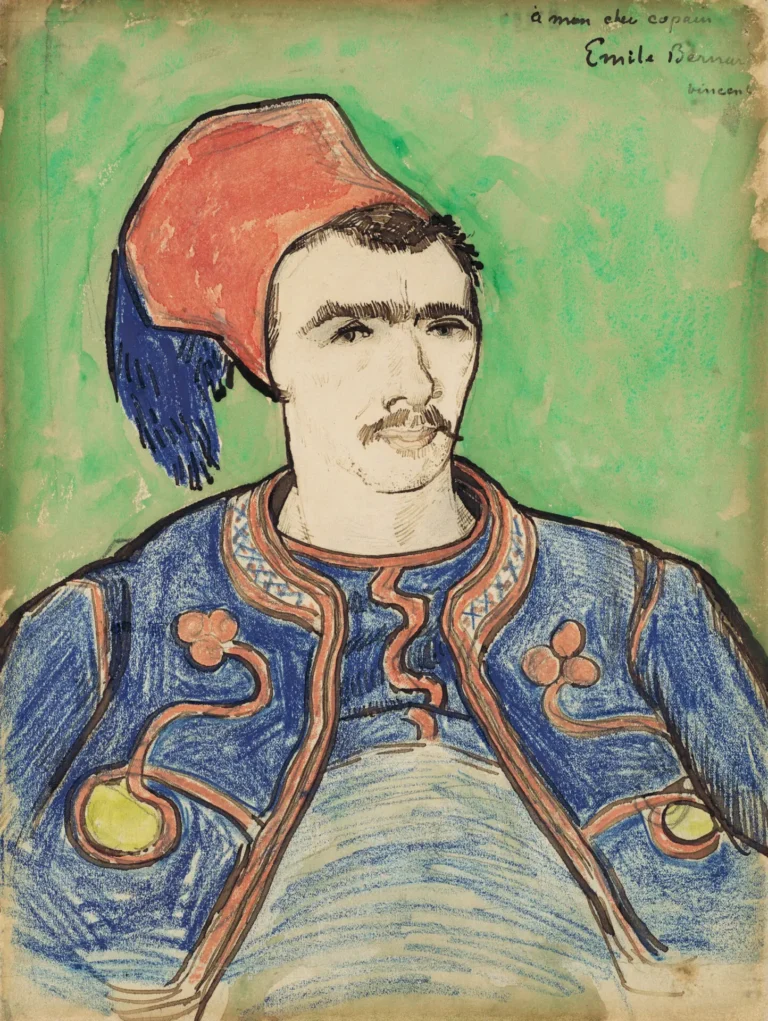The Zouave
The Zouave is a captivating portrait of a soldier from the French Zouave regiment, painted in 1888. Van Gogh captures the figure in a striking blue and orange uniform, showcasing the bold color contrasts that are characteristic of his work. The soldier's intense gaze and relaxed posture convey a sense of strength and confidence, while the dynamic brushstrokes add a sense of movement to the composition. This artwork exemplifies Van Gogh’s fascination with color and form, and his ability to breathe life into his subjects.
1888
About the Artwork
Created during Van Gogh’s time in Arles, The Zouave reflects the artist’s engagement with the vibrant local culture and his fascination with the figures of the military. Van Gogh was inspired by the uniforms of the Zouave soldiers, who were known for their colorful attire and unique military heritage. The painting captures a moment of introspection and character, drawing viewers into the world of the soldier.
Did You Know
The Zouave is one of several portraits Van Gogh painted during his time in Arles, focusing on local figures and soldiers. The Zouave units were famous for their colorful and unique uniforms. Their attire included bright red baggy trousers, short braided jackets, and tasseled fezes. The look became so iconic that it influenced civilian fashion during the 1860s, with women and children often wearing similar clothing
Van Gogh often depicted himself with eyes of different colors in his self-portraits, possibly reflecting his evolving identity and mental struggles. It may also have been an artistic choice to convey depth, emotion, or complexity.
Van Gogh created some of his best-known works during his final years in the asylum at Saint-Paul-de-Mausole in Saint-Rémy-de-Provence, including The Starry Night. Despite his struggles, he was incredibly prolific, producing roughly 150 paintings in a year.










